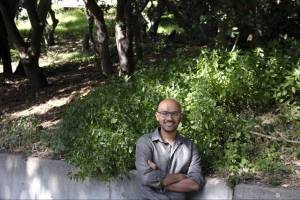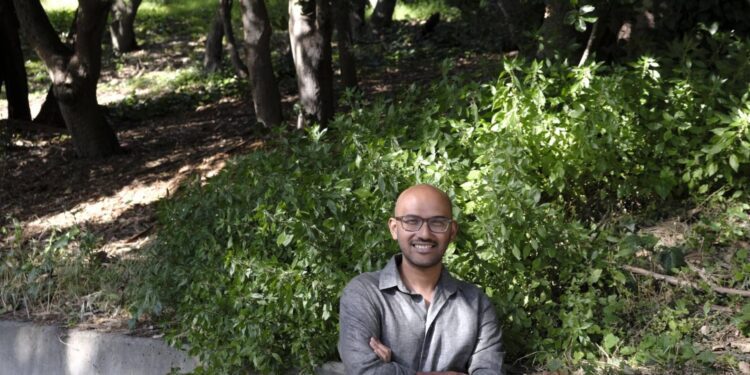Diptanu Choudhury stands out as a pioneer in technology, playing a crucial role in establishing the foundation for today’s interconnected world. His extensive career has seen him influence major tech enterprises such as LinkedIn and Facebook, along with spearheading his own initiative, Tensorlake, which addresses challenges associated with managing large-scale data.
His contributions to distributed computing, particularly with Nomad and Titus, have set new benchmarks for efficiency, dependability, and scalability in online systems. These initiatives exemplify not only technical prowess but also strategic insight into enhancing system performance and intelligently leveraging AI. As a respected figure in the tech landscape, Diptanu has been instrumental in driving a wave of innovation, solidifying his status as a key player in the advancement of global digital connectivity.

A Catalyst for Change
Diptanu’s initial experience with large-scale systems began during his college years when he co-founded a platform for mobile social networking aimed at connecting individuals throughout India. This venture sparked his passion for designing systems at scale and laid the groundwork for his future endeavors. He further honed his skills at Netflix, developing Titan, a vital cluster scheduler that remains an essential element of the company’s cloud infrastructure today.
In an industry marked by rapid changes, Diptanu emphasizes the importance of continuous learning and adaptation. “I constantly explore emerging technologies and trends, engage in workshops, and maintain connections with academic institutions,” he shares. His active participation in conferences, technical forums, and industry discussions helps him enhance his professional growth and keep his projects at the forefront of innovation.
Breaking Language Barriers
At Facebook, Diptanu played a pivotal role in eliminating language barriers within technology. Acknowledging the limitations of speech recognition tools for non-English speakers, he focused on developing sophisticated language identification models. “We broadened our speech recognition capabilities to include underrepresented languages, connecting communities previously underserved by Facebook’s platforms,” he explains.
Thanks to this advancement, Diptanu’s team was tasked with developing specialized models for these newly recognized languages. “We subsequently created tailored speech recognition systems for these languages, enhancing Facebook’s accessibility,” he reflects. This initiative has significantly boosted global connectivity, allowing a diverse array of users whose native tongues were previously excluded to engage more naturally with Facebook’s services in their own languages.
Lessons from Experience: Resilient Infrastructure
Diptanu gained invaluable insights from his involvement in crucial projects like Nomad and Titus, focusing on infrastructure that is both sturdy and scalable. He notes, “Systems may fail unpredictably—whether due to sudden traffic increases, human mistakes, or unexpected events.” This firsthand experience shaped his philosophy regarding the necessity of integrating reliability into system design.
“Reliability must be designed into your product,” emphasizes Diptanu, “and it requires attention from the outset.” His methods extend beyond initial design to encompass long-term system management. “We minimized fault domains and streamlined architecture to ensure resilience under operational pressures,” he explains. This emphasis on structural efficiency not only enhances performance during critical moments but also provides stability during demand surges.
System Optimization and AI: A Strategic Approach
Diptanu’s strategy for incorporating AI into large-scale systems is both intentional and systematic, engineered to meet specific business goals. He starts by identifying the business metrics that will evaluate the success of AI applications and underscores the importance of aligning technical efforts with overarching organizational objectives.
His teams conduct small-scale trials with limited data sets. “The advantage of this approach is that it allows us to test concepts without incurring high costs,” he points out. When preliminary tests yield promising results, they broaden the scope to refine the models for enhanced learning capabilities. Diptanu adds, “Once the model meets our established benchmarks, we optimize it for inference to balance effectiveness with our computing resources.”
Mentoring the Next Generation of Innovators
Diptanu recognizes the importance of developing talent and dedicates time to mentoring his teams and fostering a culture of continuous learning. “Throughout my career, I’ve embraced opportunities for thought leaders from both industry and academia to work alongside my teams,” he shares. This exposure encourages his teams to think beyond immediate tasks and to pursue innovative ideas that challenge conventional boundaries.
He organizes reading groups focusing on academic research and industry trends to promote collaborative learning. “These discussions give my teammates an opportunity to delve into complex topics together,” he explains. This structured learning environment not only broadens individual knowledge but also fosters teamwork, essential for driving innovation in large-scale systems.
The Challenges of Digital Connectivity and Navigating It
As energy consumption becomes increasingly critical in the advancement of digital infrastructure, Diptanu warns that this challenge will only grow as AI technology advances. He points to the need for efficient energy solutions, highlighting the necessity of generating and delivering sufficient power to data centers.
Beyond energy issues, Diptanu emphasizes the importance of establishing regulatory frameworks. He advocates for a reevaluation of how information access is managed as connectivity continues to evolve. These challenges, he acknowledges, mirror the realities of expanding digital globalization where technological advancement must align with ethical and regulatory considerations.
The Future of Technology Shaping
Diptanu is convinced that technology holds the key to solving some of society’s most pressing issues. He points out that for centuries, engineering and technology have driven human advancement and are critical in tackling today’s global challenges, such as climate change and food sustainability. He advocates developing solutions that are accessible, energy efficient, and capable of scaling. Diptanu emphasizes the importance of creating technologies that are affordable and sustainable, highlighting the necessity of responsible innovation.
From a technological perspective, he believes in the ability of technology to enhance quality of life and foster environmental sustainability. As a trailblazer in large-scale Internet systems, Diptanu serves as a powerful reminder of the transformative potential of technology. Yet, his journey is also marked by personal success and a vision for inclusive connectivity through innovative means.


